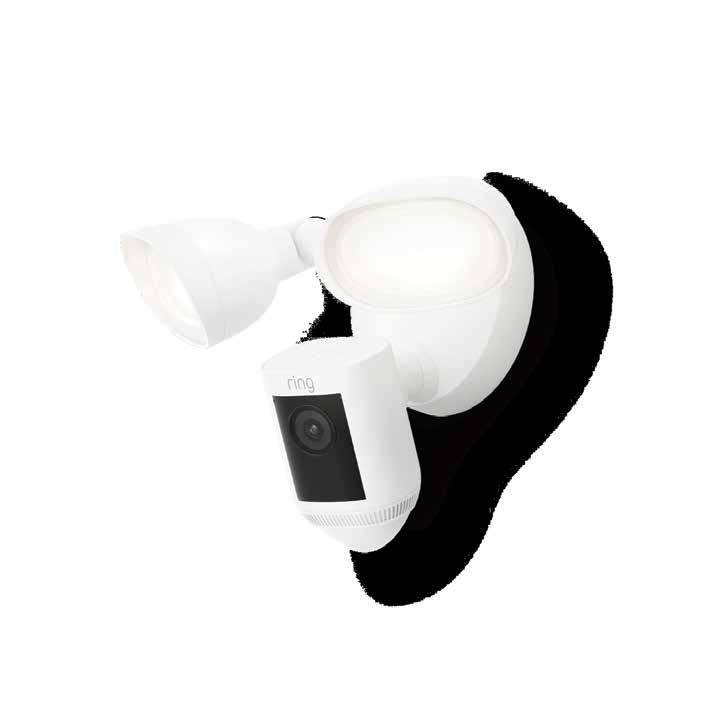










Eng Amjad Osama Arab, Chief Wholesale and Partnerships Officer at Etihad Salam Telecom Company, discusses the KSA’s rise from regional player to global competitor in digital transformation.
By 2025, the world will create 182 zettabytes of data annually, equivalent to 1.56 times the length of the Great Wall of China if the wall were filled with one terabyte hard drives. Yet, this tidal wave of data is not cascading into progress across the board.
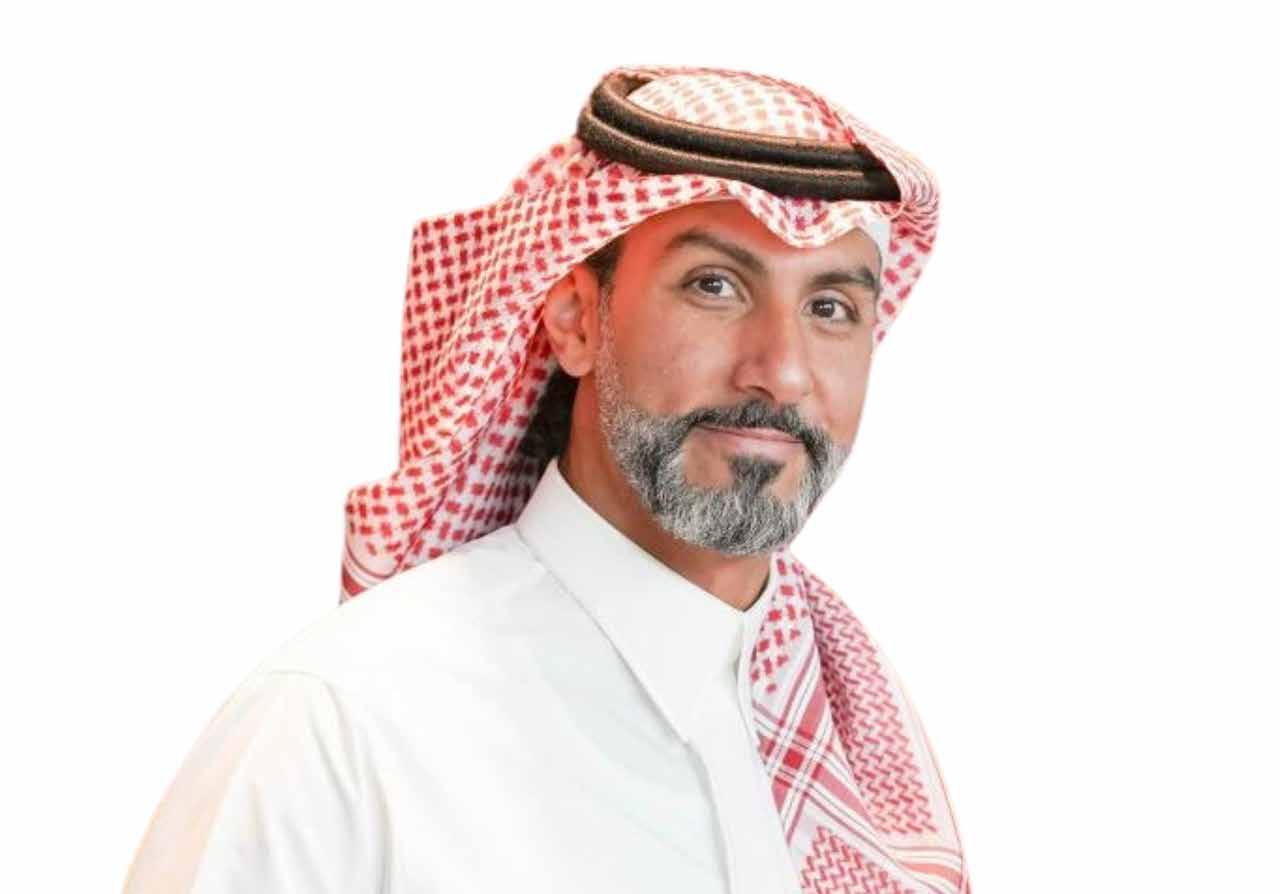
With data centres, now fully operational for clouddelivered security services and the Webex collaboration platform, Cisco is advancing its commitment to further drive the Kingdom’s digital transformation.
In Saudi Arabia, data centre capacity lags 5080% behind countries in the EU, USA, China, and Singapore. Rather than acting as a deterrent, the position of unfairness serves as a launchpad.
A projected $18 billion investment pulling the nation’s data capacity from 300 MW to 1300 MW in addition to adding six new submarine cables to the existing 15 by 2030, foresees the Kingdom’s meteoric rise from regional player to global competitor. Through Vision 2030, Saudi Arabia is embarking on a sweeping digital transformation, underlined by multibillion dollar investments in gigacities like Neom. The ambition is crystal clear. As the world gravitates towards digitalisation, the kingdom is not merely participating, it is aiming to redefine the landscape. That said, a critical divide is emerging around the notion that only large corporations and wellfunded institutions can fully leverage cuttingedge technology, while

Join with top CISOs, CIOs, and GRC leaders as they tackle cybersecurity complexities in an AI-driven world

Iain Winfield Chief Technology OfficerEMEA - Artificial Intelligence and HPC Solutions
Hitachi Vantara

Tahir Latif Expert AI Regulatory Advisor Dubai International Financial Centre

Eng. Naveed Ahmed Cybersecurity Risk Expert Saudi Data & AI Authority (SDAIA)

Ahmad Halabi Managing Director Resecurity Inc.
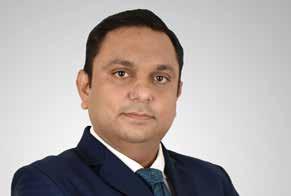
Mandar Patil Senior Vice President - International Market & Customer Success Cyble
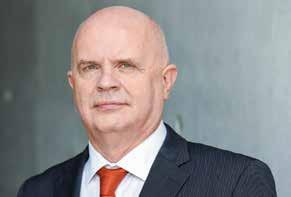
Wolfgang Kroj General Manager of Sales - Middle East and Africa
Hitachi Vantara

Mohammed Sharif Regional Manager - KSA Logitech for Business

Mayuresh Kothari Technical Director Secureworks, a Sophos company
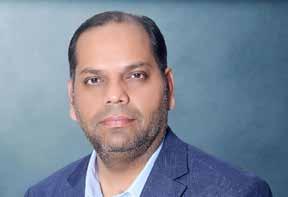
Salman Mushtaq Qureshi Cybersecurity Expert
13th February 2025
Voco Hotel, Riyadh




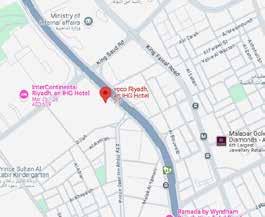



4 CONTINUED FROM PAGE 1
smaller businesses are left behind. This growing chasm hampers our collective capacity to harness the full potential of data centres as engines of progress and innovation.
Data centres are a key ally for businesses of all sizes to innovate, grow, and compete in the global marketplace while maintaining cost efficiency and sustainability. They offer scalable, secure, and cost-effective IT infrastructure, reducing the need for heavy upfront investment through pay-as-yougo models. Crucially, smaller enterprises get access to sophisticated technologies like cloud computing and AI, which might otherwise be prohibitively expensive. They also benefit from improved connectivity for global outreach and can focus on their core
4 CONTINUED FROM PAGE 1
Cisco...
goals under Vision 2030, accelerating its evolution into a technology-driven economy that leads in innovation and advanced digital infrastructure.
“Our partnership with Cisco highlights the Kingdom’s commitment to accelerating its digital economy through innovation. These initiatives will enhance Saudi Arabia’s competitiveness both regionally and internationally by promoting innovation and the adoption of AI and cloud computing technologies.” said Vice Minister at the Saudi Ministry of Communications and IT, Haytham Alohali.
“Cisco is proud to partner with the Kingdom to accelerate its Vision 2030,” said Cisco Chair and CEO Chuck Robbins. “Through our investments and innovation, we are protecting organizations, preparing the Saudi workforce for the AI era, and contributing to the local economy and manufacturing
business by outsourcing IT management.
Data centres have the potential to level the playing field between resource-rich organizations and new beginners. However, realising this vision requires more than just powerful technology – it requires trust. This trust is an essential anchor in our digital future. While tech innovation may improve each business’ capabilities in the future, human intelligence will remain the critical backstop. Human experts provide the essential oversight and judgment that ensures data centre systems remain reliable and trustworthy. With data centres in Riyadh, Jeddah & Al Khobar, international cable landing stations in Al Khobar and Jeddah as well as international connectivity bolstered by 24,000 km of fibre
Saudi’s competitive edge in energy costs translates into significantly lower operational costs for data centre operations”.
reaching and crossing seven borders, Salam is paving the digital superhighway of the Middle East capitalizing the Kingdom strategical geographical location and connecting east to west. Not only that, our embrace of digital hubs through strategic partnerships with prominent data centre owners, hyperscalers and submarine cable consortiums is enhancing national infrastructures and propelling Saudi Arabia
into a central node of the global digital economy.
The real game-changer is energy. Saudi’s competitive edge in energy costs, courtesy of its abundant fossil fuel reserves, translates into significantly lower operational costs for data centre operations. This advantage, offering 30-50% savings compared to global averages, could sway the scales in favour of Saudi Arabia as a preferred destination for data centre investments.
Drawing from the growth metrics – a booming Saudi AI market expected to grow at a CAGR of 29% until 2030 and public cloud services where annual spending is projected to grow at a CAGR of 23% until 2029 demand outpacing global trends – it’s evident that the Kingdom is setting the stage for a digital renaissance. Salam’s initiatives, coupled with the government’s infrastructural and fiscal support, are not merely strategic moves but mark the dawn of a new era.
The future we envision is one where every organisation, regardless of size or resources, can harness the power of data. This isn’t a distant vision. At a personal level, stories abound of entrepreneurs and tech aficionados in Saudi Arabia who marvel at the speed of digital transformation affecting
their businesses and daily lives. Young Saudi professionals, once eyeing opportunities abroad, now find a growing tech scene at their doorstep – a direct result of the infrastructural and economic shifts catalysed by digital infrastructure advancements. With a groundswell of support, investment, and strategic foresight, the Middle East, spearheaded by Saudi Arabia, is not just on the path to catching up with more advanced digital infrastructure regions, it is on the verge of leapfrogging into a future where it could potentially lead. The world must now watch, wait, and, most importantly, be ready to engage with a dynamically transforming digital landscape coming from the heart of the Middle East.
ecosystem. Together, we will pave the way for a more connected and secure future.”
Cloud Services Data Centers
Delivering on its commitment, Cisco announces its data centers for cloud security services as well as the Webex Collaboration Platform are now operational.
The security data center underpins Cisco’s cloud-based security services including its new Secure Service Edge (SSE) solution, Cisco Secure Access and Umbrella DNS. The center helps customers protect their users, infrastructure, and investments against threat actors and empowers them with flexible security services and data protection for devices, remote users, and distributed locations.
The collaboration data centers bring extensive services from the Webex Suite such as Meetings and Calling closer to customers in KSA and the region.
Customers experience the benefits of AIpowered collaboration tools, holistic built-in security, data protection, and privacy by design and by default when processing customers’ data. The centers provide a rich collaboration experience, real-time media performance, underpinned with industry-leading security and privacy principles with end-to-end encryption and strong identity verification.
AI Talent Development
Cisco will continue to advance AI and digital skills across the region as part of its Country Digital Acceleration (CDA) program, aligning to the goals of the Saudi Research and Development National Strategy.
According to Cisco’s AI Readiness Index, 72% of organizations in KSA have a strategy to deploy AI powered solutions but only 46% of companies report that their talent is highly prepared. This highlights a need to cultivate AI-ready local talent.
Through our investments and innovation, we are protecting organizations, preparing the Saudi workforce for the AI era, and contributing to the local economy and manufacturing ecosystem”.
In collaboration with King Abdulaziz City for Science and Technology (KACST), Cisco will invest in additional Cisco Certified Internetwork Expert (CCIE) certifications, one of the industry’s most widely recognized and respected certifications, to enhance the Kingdom’s talent pool of highly skilled local IT professionals that can support complex networking infrastructures in the AI era.
Initially launched in the Kingdom in 2016, Cisco’s CDA program supports digitization efforts across key industries, fostering digital skills and
developing the innovation ecosystem in the country.
To date, the program has implemented more than 20 projects of national impact across vital sectors, including healthcare, education, smart cities and government digitization. The program focuses on digital economy, industry 4.0 and sustainability, in alignment with Saudi Vision 2030 and the national digital transformation agenda.
With a regional head office in Riyadh, Cisco intends to build on its long-standing partnerships in the Kingdom by initiating a

manufacturing base, with groundwork beginning in 2025. The initial phase will focus on fulfillment operations for wireless technologies to meet local demand, with the intent to scale up in response to evolving market needs. Saudi Arabia joins key regions including North America, Asia and Europe within Cisco’s extensive global supply chain network. This leverages Cisco’s innovation and technology leadership to deliver solutions that address the needs of the Saudi market and contribute to the development of a sustainable and diverse economy.
“By aligning with key initiatives of Vision 2030, Cisco is committed to being a catalyst for digital transformation across various sectors in the Kingdom. As these projects advance, they will help strengthen digital infrastructure and drive economic growth to positively shape Saudi Arabia’s future,” said Salman Faqeeh, Managing Director, Cisco Saudi Arabia.
BothpartnersaimtoenhancethedigitalexperiencesacrossSaudiArabiabyprovidinginnovativeand diversifiedinternetserviceswithlowlatency,targetedtomeetthesurgingdemandforadvancedinternet servicesanddigitalcontentconsumption.

Salam, a leading provider of telecommunications services in Saudi Arabia, has joined forces with CDNetworks to enhance internet service quality and meet the surging demands of the digital era. The agreement aims to provide International IP Transit service promises to deliver unparalleled internet solutions with the lowest latency to the Saudi market.
The partnership arises as Saudi Arabia observes a fast-growing appetite for advanced internet services and digital content. The Games Live Streaming market in the Kingdom is anticipated to expand by 6.36% from 2025 to 2027, resulting in a market volume of US$141.40m in 2027. Additionally, 73% of gamers in Saudi prefer
smartphones for gaming, as reported by YouGov.
Highlighting the urgency for top-quality and diversified internet services, the country’s Video Streaming (SVoD) market is predicted to experience a growth of 8.06%, with an expected market volume of US$250.80m by 2027. These factors are driving a surge in Saudi content
delivery network market, which is expected to reach a projected revenue of US$ 413.4 million by 2030.
Addressing market demand, Salam is emerging as a key player in offering innovative, next-generation services including broadband internet services, network connectivity, cloud services, managed
Our commitment to innovation and excellence finds a perfect partner in CDNetworks, ensuring that our customers enjoy a robust digital ecosystem with the fastest and most dependable connectivity.”
services, cybersecurity, and satellite communications, aimed at sectors encompassing government, business, carriers and operators, and the consumer segment.
Amjad Arab, Chief Wholesale and Partnerships Officer at Salam, said: “The collaboration with
CDNetworks marks a transformative step towards empowering the people of Saudi Arabia with top-tier internet services. Our commitment to innovation and excellence finds a perfect partner in CDNetworks, ensuring that our customers enjoy a robust digital ecosystem with the fastest and most dependable connectivity.”
With a mission to provide fast, secure, and reliable digital experiences, CDNetworks is set to play a key role in enabling Salam to unlock an array of digital possibilities for various enterprises across distinct industries within the Kingdom.
“We are thrilled to partner with an eminent Saudi company like Salam as they strive to redefine the digital landscape in the region. Our global expertise in creating secure and efficient online environments will be instrumental in providing the Saudi market with the low-latency, highquality internet services it demands,” said Mr. Antony Li, VP of CDNetworks. Salam and CDNetworks are set to catalyze the digital transformation within Saudi Arabia by ensuring access to superior internet solutions, strengthening the Kingdom’s position as a growing hub for digital content consumption and generation.
VisitorswillhavethechancetointeractwiththeavatarofHPE’smanagingdirectorforMiddleEast,MohammadAlrehaili,and experiencefirst-handthepotentialofcutting-edgeAI-poweredsolutions.

Hewlett Packard Enterprise (HPE) is set to return to LEAP, taking place at the Riyadh International Convention & Exhibition Center in Malham, Saudi Arabia from February 09 – 12, 2025. At the event, HPE will showcase its cutting-edge AI, hybrid cloud and networking solutions, including HPE Private Cloud AI, and announce its latest updates on the ‘Saudi Made’ HPE production initiative, highlighting HPE’s commitment to the Saudi Arabia market.
At this year’s booth (H1. L40) visitors have the opportunity to interact with a virtual AI avatar of
HPE Middle East managing director, Mohammad Alrehaili, and learn about how HPE’s AI-powered solutions are shaping the future by boosting productivity and accelerating the rate of discovery and innovation. They can speak with HPE’s technical experts, and experience interactive challenges and live demonstrations, including:
Virtual AI avatar of HPE’s Middle East managing director, Mohammad Alrehaili –Demonstrating the power of AI at scale, attendees can communicate with Mohammad’s AI
powered avatar, which looks and sounds just like him. Enabled through Proto, the world’s first holographic communications platform, the 7ft tall machine allows life-size holograms to be beamed in real time.
• ‘Saudi Made’ HPE servers – Not even a year ago, at LEAP 2024, HPE announced the availability of ‘Saudi Made’ HPE servers, following the opening of its new Riyadh production facility. This year, visitors will be able learn more about HPE’s commitment to the ’Saudi Made’ program and receive the latest updates on the production.
• HPE Private Cloud AI –
With the first Private Cloud AI solution of this kind, HPE is bringing its worldleading AI capabilities to the Middle East. At the HPE booth, visitors can learn how this turnkey
HPE Private Cloud AI, co-developed with NVIDIA and part of the NVIDIA AI Computing by HPE portfolio, will enable them to deploy generative AI (GenAI) applications in seconds.
• The HPE GreenLake High-Speed challenge – HPE GreenLake is a hybrid cloud solution that allows organizations to run computing services with a public cloud experience, deploy and manage resources across their private and public clouds while retaining control of their data and flexibility over how they consume and manage services. Attendees are invited to test their skills using HPE GreenLake to build an IT landscape from the ground up. The fastest to complete the challenge successfully will be awarded by HPE.
Smart stadium & fan experience – HPE
Aruba Networking is a key provider for “smart stadiums” technology solutions, delivering high-speed, reliable connectivity throughout world-renown venues.
Visitors of the “Orange Smart Bus” will hear more about how HPE Aruba Networking by providing a secure and intelligent network infrastructure that enables and supports enhanced and connected stadium experiences for fans.
100% fanless direct liquid cooling systems architecture – Based on years of expertise, HPE introduced the industry’s first 100% fanless direct liquid cooling systems architecture. In conversation with HPE experts onsite, LEAP attendees can find out how this architecture delivers greater energy and costefficiency advantages than the alternative solutions
on the market. In fact, this direct liquid cooling architecture yields 90% reduction in cooling power consumption as compared to traditional air-cooled systems.
“LEAP brings together technology experts, innovators, business and thought leaders from across the region,” said Mohammad Alrehaili, Middle East managing director at HPE. “This makes it the ideal environment to strengthen relationships, celebrate successes and explore future opportunities as we present our broad portfolio of AI, hybrid cloud and networking solutions, and reaffirm our commitment to the Saudi Arabia Vision 2030. We are excited about the conversations and new business opportunities this event will drive and are looking forward to welcoming customers, partners and visitors at our booth in Hall 1.”
CNME Deputy Editor Daniel Shepherd takes a closer look at Chinese start-up DeepSeek, following the launch of its latest AI models, which has caused shockwaves across the technology industry and on Wall Street. Chuck Herrin, Field CISO at F5, also expresses his concerns regarding the security and safety of the DeepSeek AI releases.
Chinese startup
DeepSeek’s launch of its latest AI models, which it says are on a par or better than industryleading models in the United States at a fraction of the cost, is threatening to upset the technology world order.
The company has attracted attention in global AI circles after writing that the training of DeepSeek-V3 required less than $6 million worth of computing power from Nvidia H800 chips.
DeepSeek’s AI Assistant, powered by DeepSeek-V3, has overtaken rival ChatGPT to become the top-rated free application available on Apple’s App Store in the United States.
This has raised doubts about the reasoning behind some U.S. tech companies’ decision to pledge billions of dollars in AI investment and shares of several big tech players, including Nvidia, have been hit.
Below are some facts about the company
shaking up the AI sector worldwide.
Why is DeepSeek causing a stir?
The release of OpenAI’s ChatGPT in late 2022 caused a scramble among Chinese tech firms, who rushed to create their own chatbots powered by artificial intelligence.
The two models that have been showered with praise by Silicon Valley executives and U.S. tech company engineers alike, DeepSeek-V3 and DeepSeek-R1, are on par with OpenAI and Meta’s most advanced models, the Chinese startup has said.
They are also cheaper to use. The DeepSeek-R1, released last week, is 20 to 50 times cheaper to use than OpenAI o1 model, depending on the task, according to a post on DeepSeek’s official WeChat account.
But some have publicly expressed scepticism about DeepSeek’s success story.
Scale AI CEO Alexandr Wang said during an interview with CNBC, without providing evidence, that DeepSeek has 50,000 Nvidia H100 chips, which he claimed would not be disclosed because that would violate Washington’s export controls that ban such advanced AI chips from being sold to Chinese companies. DeepSeek did not immediately respond to a
request for comment on the allegation.
Bernstein analysts highlighted in a research note that DeepSeek’s total training costs for its V3 model were unknown but were much higher than the $5.58 million the start-up said was used for computing power.
The analysts also said the training costs of the equally-acclaimed R1 model were not disclosed.
Who is behind DeepSeek?
DeepSeek is a Hangzhoubased start-up whose controlling shareholder is Liang Wenfeng, cofounder of quantitative hedge fund High-Flyer, based on Chinese corporate records.
Liang’s fund announced in March 2023 on its
One of the most concerning aspects about the DeepSeek releases, which will likely carry into new model releases, is how lax the alignment controls are and how easy the models are to jailbreak and use for malicious/destructive purposes.”

official WeChat account that it was “starting again”, going beyond trading to concentrate resources on creating a “new and independent research group, to explore the essence of AGI” (Artificial General Intelligence). DeepSeek was created later that year.
ChatGPT makers OpenAI define AGI as autonomous systems that surpass humans in most economically valuable tasks.
It is unclear how much High-Flyer has invested in DeepSeek. High-Flyer has an office located in the same building as DeepSeek, and it also owns patents related to chip clusters used to train AI models, according to Chinese corporate records.
How does Beijing view DeepSeek?
DeepSeek’s success has already been noticed in China’s top political circles. On January 20, the day DeepSeek-R1 was released to the public, founder Liang attended a closeddoor symposium for businessman and experts hosted by Chinese premier Li Qiang, according to state news agency Xinhua. Liang’s presence at the gathering is potentially a sign that DeepSeek’s success could be important to Beijing’s policy goal of overcoming Washington’s export controls and achieving self-sufficiency in strategic industries like AI.
Chuck Herrin, Field CISO, F5, also spoke to CNME, in which he discussed the impact of DeekSeek, and his concerns around its lax the alignment controls and potential use to create malware
When asked what does the global AI map now look like with the emergence of these new Chinese models, Herrin stated that the world was still attempting to digest the impact DeepSeek has had.
“I think the world is still digesting the impact, and more models are being released and updated still. This will continue. Proliferation overall will continue to accelerate, particularly as performance gets better on smaller and cheaper models. The lower the cost, the more use cases come into relevance. It does dramatically impact the investment areas of AI, and definitely underscores the lack of any real moats as open source continues to catch on. We need to try and prepare for unlimited free intelligence and all of the
associated implications,” said Herrin.
One of the most surprising aspects of the announcement by DeepSeek is their admission of the small budget that they needed compared to other large AI projects.
“Perhaps, though the number as usually stated is a bit misleading, and you really don’t know what’s true. But, from what I’ve seen from other researchers, the efficiency and cost gains are very substantial, regardless of how many millions it cost. It’s not like someone could cash a check for $6m today and replicate what they did; that’s a little like citing how much it costs to build a car after you’ve invested in a factory. There’s a lot of infrastructure not included in that figure,” said Herrin.
Herrin has called for the industry to be cautious, and reiterated the geopolitical forces at play in the global AI arms race.
“I think we need to be wary of what’s happening and understand the geopolitical aspects of the global AI race condition we’re in. Everyone is in a race condition to adopt AI, from small businesses to large enterprises, governments of every nation, and the global nuclear powers. Everyone feels that ‘if we don’t do it, ‘they’ will, and everyone has at least one ‘they’ to worry about.’ This pressure on speed always puts risk management second, as slowing down can lead to losing the race, which is potentially existential. People and organizations don’t always act wisely or rationally under that kind of pressure,” said Herrin.
Herrin concluded his observations on DeepSeek, by stressing his grave concerns over how lax the alignment controls are in DeepSeek’s new releases.
“One of the most concerning aspects about the DeepSeek releases, which will likely carry into new model releases, is how lax the alignment controls are and how easy the models are to jailbreak and use for malicious/ destructive purposes.
Very quickly after we all started downloading these new models, red teams and criminals were immediately learning how to leverage them to create new malware, design ransomware and info stealer systems, and who knows what else DeepSeek could be abused to help create.
Right now, I think we spend way too little time worrying about malicious actors abusing it,” said Herrin.
CNMEEditorMarkForkermanagedtosecureanexclusiveinterviewwithcybersecurityexpertJens Monrad,HeadofMandiantIntelligenceforEMEA,inanefforttodigalittledeeperintosomeofthekey findingsthatemergedfromitscomprehensiveCybersecurityForecast2025,asweenterthe‘second phase’ofAIinactionintheglobalcybersecuritylandscape.

Jens Monrad has spent almost 30 years in the cybersecurity industry, and has enjoyed a decorated and distinguished career to date.
Monrad is the Head of Mandiant Intelligence for the EMEA region after joining the company in 2021.
Monrad has held a number of notable
maintain its brand and now operates under the umbrella of Google Cloud.
CNME was afforded the opportunity to sit down with Monrad before the end of 2024, to take a deep dive into Google Cloud’s Cybersecurity Forecast 2025.
Sunil Potti, General Manager of Google Cloud Security said that 2025 would be the first year
phase of AI is going to entail, I think it’s a good idea to look at the first phase of AI. Essentially, the first phase of AI was all about summarisation and finding ways of really utilising these LLMs to transform the way we work. For example, a threat report containing 500 pages can now be summarised into 1-page using AI tools
We also see a problem when we respond to incidents in terms of a real lack of processes and procedures from organisations, which inevitably causes major delays in terms of responding to cyberattacks.”
executive positions during his career, and has worked with cybersecurity leaders such as FireEye and Cisco Systems.
In September 2022, Mandiant was acquired by Google Cloud for $5.4bn – and the cybersecurity company had established itself as a real leader when it came to deep threat intelligence.
Despite the acquisition Mandiant was allowed to
where we would see the second phase of AI in action when it comes to security.
That’s where our conversation began, and as Monrad pointed out the challenge now is how security leaders use the progress that has been made in relation to summarisation and start applying that into automated rulesets.
“In order to go into detail on what the second
and LLMs. When we examine the second phase of AI, there’s the realisation that we can use it to summarise things, but how can we use AI to actually apply what is contained in these reports in a more automated fashion? In the current climate, when analysts read reports, they take the technical parts of it and translate it into a ruleset, and they then build that ruleset
no-brainer in all reality. We often talk about how we can reduce toil and remove some of the repetitive and mundane tasks that we have to do anyway, and we can do this by using AI,” said Monrad.
Analysts are know to be quite anal (pardon the pun) when it comes to the way they extract knowledge from reports, and have their own unique way of working.
Will AI help or hinder them?
covered very deeply in our forecast report, but when it comes to compromises that we do see, especially in the cloud, a lot of the issues arise from misconfigurations. We also see a problem when we respond to incidents in terms of a real lack of processes and procedures from organisations, which inevitably causes major delays in terms of responding to cyberattacks. It is so important that organisations establish best practices in order to be able to effectively respond to a breach,” said Monrad.
Monrad also advocated for enterprises to implement SIEM solutions to help them scale and centralise their information.
and test it within their respective security controls. However, imagine you could say give me all the rules that are compatible with my security controls, and apply them in my environment immediately based on the report. That is a gamechanger, and what this ultimately empowers enterprises to do is build that link between summarisation capabilities into automation and orchestration,” said Monrad.
Monrad pointed out that the report robustly stresses the benefits this will yield for the cybersecurity ecosystem, although he did acknowledge that initially it will be highly likely that there will be a lot of false positives.
“We also mentioned in the report that we believe there will be so many benefits from this process, even though there may initially be a lot of false positives. We also stress in the report that we are still a firm believer that all of this does require human oversight in what we do with AI, and how we apply it. That being said, when you weigh in the time efficiency of building out these rules and applying automation where you can using AI then it’s a
“Look, there is a learning curve with all of this, and there’s no doubt about that, but we have to embrace change. If you speak to Tier 1 analysts then they’ll tell you that a lot of what they do in the Security Operations Centre involves a lot of repetitive tasks, and in these types of scenarios you can actually give them time back by using AI. It’s evident that by leveraging AI it is going to be more valuable for both the organisation and the analyst to address security challenges that are not repetitive, and not have to perform the same mundane task that needs to be completed every single day. It is going to empower cybersecurity professionals to do more,” said Monrad.
Google Cloud’s Cybersecurity Forecast 2025 doesn’t pull any punches, and doesn’t sugar coat the fact that malicious actors will continue to adopt AIbased tools for attacks.
The following quote from the report paints a stark picture.
“As AI capabilities become more widely available throughout 2025, enterprises will increasingly struggle to defend themselves against these more frequent and effective compromises.”
When asked what advice Monrad would give enterprises looking to bolster their cyber hygiene, is answer was simple, establish best practices in terms of how you respond to an attack and do it now.
“I honestly do think that organisations need to foster a culture where they engage in a lot of practices, or for a want of a better word fire drills to ensure there is a level of preparedness from top to bottom. It’s not something that we have overemphasised, or
“Enterprises need to look at solutions that they can adopt, or implement that enhance their ability to respond to incidents. Can we implement SIEM solutions that will help us understand and scale our operations in a way in which we can actually centralise information? Can we improve on security orchestration? Can we automate on certain things when it comes to a response scenario? These are the types of questions that organisations have to ask themselves in order to really become cyber resilient. We also really have to do a better job when it comes to handling who has access to our information, how do we validate and authenticate users, do we still rely on username and passwords? Businesses need to move to a passkey, security key, or multifactor authentication to make their organisations more secure,” said Monrad.
There has been a lot written about how these new open-source AI models can be used as a new form of cyberattack, but as Monrad points out, nobody has the advantage in that regard, citing that everyone was on the same ‘learning curve’.
“When it comes to AI from an adversary perspective, we need to be cognisant of the fact that both the good guys and the bad guys are on the same learning curve, nobody has the upper hand at this point in time. Let’s be frank, these adversaries are still being successful in compromising victims through phishing emails using stolen credentials, so the appetite from them in terms of learning more about AI from an
adversary perspective is still very much in its infancy. There is a high cost in terms of learning it, and given the fact that they can still monetise unauthorised access via phishing emails, then they may opt against investing the time and money needed to learn about AI, but it will come at some stage, there is no doubt about that,” said Monrad.
The new NIS2 directive has been designed to significantly reshape cybersecurity practices across EMEA in 2025.
Many independent analysts believe that many enterprises across the EMEA region may find difficulty in complying with this new directive.
However, Monrad believes the fact that the NIS2 has more scope is a good thing and thinks the fact that enterprises are being compelled to comply will accelerate better practices across the board.
“NIS2 obviously has a much wider scope than the initial NIS directive, and whilst it is covering more industries and organisations, I also think it is a much more mature recognition of the value of digitalisation in our day-to-day life. A good example of that is the fact that NIS2 is also looking into what is critical for society and the economy, energy, transport, healthcare and public infrastructure are all areas that NIS2 is focusing heavily on. I think due to the expanded scope of the NIS2 directive, then there is that added layer of complexity with much stricter requirements
for organisations. It is evident that organisations need to invest in people, processes and technologies to achieve a certain degree of compliance and naturally that is going to put stress on some organisations,” said Monrad.
Monrad firmly believes that the new directive will deliver an uplift in terms of cybersecurity posture across the EMEA region.
“Some organisations will be asking how they can find these people, how can they retain them, and how can they provide education for them to ensure they are well trained and informed on new things emerging within the cybersecurity ecosystem? However, I do think that there is a major upside in the fact that it will enhance resilience, it undoubtedly drives an uplift in cybersecurity posture across the EMEA region because it will force organisations to
get into line and mature themselves,” said Monrad.
The Cybersecurity Forecast 2025 also regretfully highlighted that geopolitical tensions in Ukraine and the Middle East, which look unlikely to be resolved anytime soon, are going to ‘drive’ threat activity in 2025.
CNME asked Monrad what governments and large organizations need to do to in order to mitigate or prevent these types of cyberattacks?
“In 2016, NATO made an announcement that back then didn’t really resonate very loudly if truth be told, when they said they were recognising cybercrime as a theatre for potential war and conflict. I think everything that we see in the cyberspace does contain some sort of geopolitical flavour to it. I think you have to look at it from an adversary perspective because there are certain benefits
CNMEEditorMarkForkersatdownwithRickLuebbe,CEOandCo-Founderof Group14,tohearhowhiscompanyisusheringinaneweraofsiliconbatteries,and howthetechnologycanpowerboththeelectrificationmovementglobally,andbean enablerforAItechnology.

from attacking countries and organisations in the cyberspace domain as opposed to sending in troops on the ground. There is less risk and there is also a cost saving element attached to it also. Organisations today really do need to have a better grasp on what is happening geopolitically because we do see that it comes in different flavours within the cyber domain. You see countless examples in the ongoing war between Ukraine and Russia, when EU countries, or NATO members lend their support to one side of the conflict there is a response in the cyber domain, either through DDos attacks and so on, or something else,” said Monrad.
Monrad concluded a brilliant interview by stressing the need for organisations to really invest time and energy into being more well
Rick Luebbe is a US entrepreneur that has spent the last 20 years developing solutions and products that are designed to transform the energy sector.
In a decorated and distinguished career, Luebbe has established himself as a prominent business leader in the renewable energy space.
Prior to carving out a successful career as an entrepreneur, Luebbe served in the US military.
Nowadays, he is currently the CEO and Co-Founder of Group14, which is on a mission to ‘electrify everything’.
Luebbe is a firm believer that silicon batteries will be the key cog in that electrification effort.
However, Luebbe began our conversation by giving a broader overview on his two decades in the energy industry, and the factors that led to the creation of Group14 in 2015.
“The parent company of Group 14 was called EnerG2. We founded EnerG2 back in 2003, and at the time my co-founders and I looked at a whole bunch of different business opportunities, and we recognised that being entrepreneurs consumes a lot of life energy, so we decided that we wanted to pour our life energy into something which we would feel really good about, win, lose, or draw. We just wanted to feel that we were pushing the ball in the right direction. This led us down the path of renewable energy, which in 2003, was well before the clean tech initiative kicked into gear.
We looked at a number of different opportunities,
versed and informed on geopolitical issues globally.
“The geopolitical agenda in today’s climate will have a very big focus in cybersecurity, because we are so dependent on digital solutions, and as a society we are now so digitalised, so when these attacks happen then they can cause so much disruption. If you want to send a message, or really disrupt a country then there is a very cheap entry way to do it via cyberattacks. We are still trying to determine what the appropriate response is from a defence perspective to cyberattacks. As a cybersecurity community we are still trying to figure that out and navigate that challenge, so this is something that we will unfortunately will continue to see and it will require organisations to be much more informed on geopolitical affairs on a global scale,” said Monrad.
but the first project that we really started to get excited about was hydrogen storage, which 20 years later is becoming popular again. In 2003, that was the next big thing and the prediction was that we were all going to be driving in hydrogen-powered vehicles by 2010,” said Luebbe.
As Luebbe explained the science behind it was of a paper-based nature, which as it turned out was not going to work, but their technology platform was still able to be incredibly intuitive and innovative, which ultimately led them down the path towards silicon batteries.
“We were really excited about using synthetic nano carbons for storing hydrogen based on a paper nature. It turned out that the paper was debunked and wrong, but we didn’t know that at the time. However, the technology platform was really interesting, and we did a lot with it. We made carbons for ultra-capacitors, and we made carbons for additives for elastic batteries to make them work better. Through that path we became very interested in improving the performance of lithium-ion batteries, and using our platform to make silicon work in batteries using this carbon platform. Once we realised just how effectively we could improve silicon performance, we took all our key resources and spun that out of EnerG2 and then sold EnerG2 to German chemical company BASF in 2016. That acquisition then led us down this concentrated path on
silicon batteries, which has been brilliant for us,” said Luebbe.
Luebbe conceded that when it comes to the electrification movement across the United States, there is rather inevitably some resistance to change, it is human nature after all for us to not like change.
However, as Luebbe explained, the fact that silicon batteries can generate up to 50% more energy than a traditional high-performance lithiumion, means that in all reality it is a gamechanger for a lot of key industry verticals.
“Silicon battery technology became so compelling to us, and our mission, which is to electrify everything, became real. It’s great to have support from governments and subsidies that are designed to accelerate electrification, but change is hard as we know. I believe the fact that silicon batteries are so compelling that it is going to happen anyway. The performance differential that you get with a siliconbased storage system over a traditional system is a gamechanger. Silicon batteries originally focused on providing more energy, and our technology can provide 50% more energy than traditional state-ofthe-art high-performance lithium-ion batteries–that’s really exciting for consumer electronic products, and for the aviation industry because range and weight really matters,” said Luebbe.
Luebbe also added that in the last couple of years they have discovered that silicon
batteries fundamentally charge fast.
“We have one customer that can go from 0-100% state of charge in 90 seconds, and that’s unbelievable. In Dubai, Joby is establishing two Vertiports, and Joby will manage the charging system. If it’s not a siliconbased charging system then those aircrafts may have to sit there for 5-6 hours to become fully charged, but if you can charge those planes in 5-6 minutes then it really enables the commercialisation of electric aviation. The energy benefits are awesome, but where I believe the fundamentally transformational element with silicon batteries will come is in their ability to enable fast charging,” said Luebbe.
A major barrier in the mass adoption of electric vehicles, not only in the US, but across most key markets globally is the issue of ‘charge anxiety.
Again, as Luebbe points out, a solution to all these issues are silicon-based charging systems.
“The major stumbling block in the EV adoption marketplace is charging. I drive an EV, and I love it, and it’s a big robust vehicle that can do 0-100 in 3 seconds, but if I want to charge it, then it takes around 45 minutes. This is far too long for the average consumer. The average fuel stop in the United States is 8 minutes. Charge anxiety is the primary inhibitor in the electrification of transportation, but if we can get that charge time down to less than the current stop time for internal combustion then
that anxiety goes away completely. In addition to this, if you can get a car in and out of a charging system in 5 minutes then you don’t need as many chargers, and a reduction in infrastructure also translates to a reduction in overall investment costs.
Considering everything Luebbe has outlined about silicon batteries, it begs the question as to why there hasn’t been mass adoption of silicon batteries. As Luebbe explains, there is a constraint when it comes to silicon materials, but that will soon change when their purpose-built factories kick into full operation.
“The only constraint in why there hasn’t been a mass adoption of silicon batteries is the availability of silicon battery materials. We’re the most advanced when it comes to other companies operating in the silicon battery space, and we’re building a factory in Moses Lake in Washington State, which we expect to come online in Q1. That factory’s initial annual capacity will be about 2,000 tons or 10 GWh of silicon battery material, which translates into around 100,000-200,000 EVs per-year. We have a commercial facility for consumer electronics, but it can only make about 2% of what the factory in Moses Lake is going to deliver. Our material is already in millions of cell phones because obviously they don’t require as much material or as big a battery as an EV does. The factory we’re building is really what is required to drive the transformation that is needed. In the meantime, we have a joint-venture factory with SK in South
This innovative service offering aims to provide endto-end strategy, design, deployment, optimisation and management of Sovereign AI capabilities.
Deloitte, the Innovation & Emerging Technology Partner at LEAP 2025, has launched its comprehensive Silicon2-Service (S2S) offering in the Middle East. This innovative service offering aims to provide end-toend strategy, design, deployment, optimisation and management of Sovereign AI capabilities for its most strategic clients.
Unveiled at the world’s most attended technology event, the S2S offering’s all-
encompassing AI approach blends industry best practices in production, deployment, and business integration. The service offering draws on Deloitte’s deep expertise in private cloud infrastructure, hardware optimization and management, AI software integration, data science, and data management, leveraging powerful technology platforms such as NVIDIA.
“AI is transforming business landscapes
The performance differential that you get with a silicon-based storage system over a traditional system is a gamechanger.”
Korea which is similar to the one we are constructing in Moses Lake. That joint venture factory began shipping in August 2024. The silicon battery era is just beginning with these facilities that are capable of providing enough material for those who want to move to a silicon strategy,” said Luebbe.
Luebbe said that the silicon battery era only really began in September 2024, but he can see a demand for the technology from the huge volume of customers they have already acquired.
“We have over 110 customers currently in qualification, so virtually everyone in the industry, and that is for two reasons. One, the material works, and it really does improve battery performance significantly. And we are the only ones that can produce at the kind of scale needed to get to that breadth of customer base. Our technology is a complete drop-in for current battery manufacturers, so it is very easy to switch from traditional to lithium-ion, and it processes the same that graphite does today. For example, let’s say Tesla has a 30-hour gigawatt factory in Nevada, they could theoretically switch to a silicon-based anode overnight and get a 50% improvement in energy
density in those cells. If we can improve the cell by 50% then we have increased the capacity of that factory from a 30 gigawatt-hour to a 45 gigawatt-hour factory, with no CAPEX. There are also huge benefits from a cost perspective, so all-in-all it’s a gamechanger and a nobrainer to pursue a siliconbased battery approach,” said Luebbe.
AI is the name of the game, and feels like in many ways is the only currency in town.
It is dominating the tech landscape, but Luebbe believes that silicon batteries can also be an enabler in the AI era.
globally and presenting our Middle East region with unprecedented opportunities to innovate and scale. With the rollout of our Silicon-2-Service offering in the region, we are enabling adoption and providing access to cutting-edge innovation at a large scale. We support clients across the public and private sectors through their entire AI journey”, commented Yousef Barkawie, Deloitte Middle East AI & Data Leader.
“S2S is our way of assisting our clients in the design and deployment of their sovereign AI capabilities in a secure, private, and scalable infrastructure. Our clients can now confidently deploy the latest AI infrastructure, from GPU to Generative AI services – therefore Siliconto-Service – on their private networks. Client organisations are now able to build AI solutions that maximise productivity while addressing sovereign considerations and mitigating marketspecific challenges”, he added.
The S2S offering stands out by managing the complexity of AI adoption at every stage, allowing businesses to achieve faster and more impactful outcomes. By integrating production-grade AI solutions with custom workflows, Deloitte’s S2S helps reduce the costs, risks, and challenges
“Silicon could be an enabling technology for AI. We know that the new AI models consume a lot of energy. At the consumer device level, our material is now powering AI-enabled smartphones made by Honor in China. These AI-enabled chips consume a lot more power, and the dilemma is that you don’t want to trade one feature for another, so there’s no point having these AIpowered chips if you can only run your phone for 10 hours as opposed to 18 hours, consumers don’t want that. Silicon batteries give more energy density in the cell and they don’t have to make the battery bigger as a result, and now they can balance that run time with this new AI capability, and deliver the same user experience for the consumer. That’s one of the really attractive aspects of a silicon battery in consumer electronics,” said Luebbe.
In addition to this, he concluded a brilliant exchange by outlining how silicon can be a remedy to the issues facing AIpowered datacentres globally.
“AI-powered datacentres require huge peaks of power when they are going through a specific processing surge. In order to accommodate these peaks, datacentres have to leave a whole bunch of excess power effectively on standby in order to absorb those peaks. What that essentially means is that they can’t put as many servers in that datacentre as they would like, and as a result almost every single datacentre is power constrained. One of the advantages of silicon batteries is that they charge fast as we talked about, but they also discharge fast too. So now you can put in at the rack level silicon batteries to absorb those power peaks, and that will enable your datacentre to have more capacity and get more utility out of that infrastructure,” concluded Luebbe.

organisations face when deploying and scaling advanced technologies. Through the partnership with NVIDIA, Deloitte Middle East simplified the deployment of stateof-the-art infrastructure, including NVIDIA’s accelerated computing and AI platforms, enhancing efficiency and scalability. This collaboration enables Deloitte’s clients to accomplish faster time to value of their large-scale
AI investments while embracing the freedom to innovate and adapt to evolving market demands. The launch of S2S aligns with Deloitte’s broader commitment to supporting the Middle East’s digital economy by fostering an ecosystem where AI bridges innovation with tangible, positive outcomes, in compliance with the prevailing regulations unique to each country.

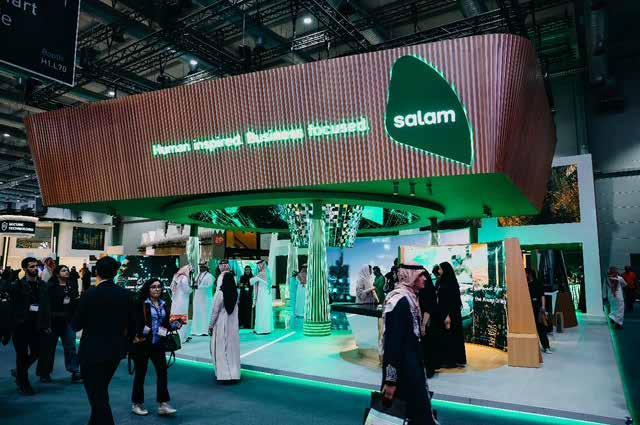
Salam is expanding its offerings beyond traditional connectivity with a commitment to responsible and sustainable technological innovation.
Salam, a leading digital infrastructure provider in Saudi Arabia, recently announced its sponsorship of LEAP 2025, the award-winning global technology event set to take place from February 9-12 under the theme ‘The Future of Tech’. As part of its commitment to innovation and sustainability, “Salam” will showcase its latest advancements in connectivity solutions, sustainability, 5G networks, Multi-Access
forefront of companies redefining the trajectory of technology—not only by leading digital transformation and sustainability in the Kingdom but also by evolving our brand. As a leading provider of digital infrastructure with a strong foundation in telecommunications, we are now broadening our horizons into new and expansive fields. Our presence at LEAP 2025 embodies our journey toward innovation and our
Our presence at LEAP
society at large through solutions that showcase our deep-rooted expertise in connectivity and security, while also emphasizing our commitment to sustainability and empowering SMEs.”
Our Commitment to SMEs and Business Community
With more than 500,000 SMEs currently in operation in Saudi Arabia, Salam is committed to strengthening their
2025 embodies our journey toward innovation and our strong support for the ambitions of the digital economy and Saudi Vision 2030”.
Edge Computing (MEC), cybersecurity, robotics, and services designed to empower both consumers and businesses.
Ahmed Al-Anqari, CEO of Salam said:
“At ‘Salam,’ we take pride in being at the
strong support for the ambitions of the digital economy and Saudi Vision 2030. Our goal is to harness the power of technology and innovation to deliver purposeful solutions that benefit businesses, communities, and
digital capabilities and security. The company seeks to address the unique needs of the business community by offering solutions like virtual firewall services, cloud-native application services, enhanced dedicated internet, and
voice services. A holistic IT service management approach is also tailored specifically to the requirements of SMEs. Salam supports the growth and resilience of businesses, ensuring they are well-equipped to compete in an increasingly connected world.
In 2024, Saudi Arabia faced cybersecurity challenges from 72 distinct threat actors, along with experiencing 88 ransomware incidents that increasingly targeted key industries such as manufacturing, information technology, and construction. At LEAP 2025, Salam will showcase cutting-edge solutions to address evolving threats. SalamBot, a robotic security solution, patrols autonomously, offering 360° video surveillance and artificial intelligencepowered detection capabilities. In addition, the Siyaj Solution provides a comprehensive suite for smart office security. It
offers a sophisticated ecosystem of advanced control measures along with intelligent network prioritization, ensuring a secure and streamlined workflow.
Technology to Drive Sustainable Impact
Saudi Arabia’s Green Technology Sustainability Market was valued at USD 5.3 billion in 2024 and is projected to reach USD 12.83 billion by 2030.
Salam’s contributions to sustainability will take center stage with their implementation of AI-powered solutions geared toward effective waste management and smart utility management. These innovative tools are crafted to optimize the use of resources and foster environmental sustainability. Additionally, the company showcases a robust fleet management solution and the Sustainex Environment Monitoring system, which reflects Salam’s commitment to operational efficiency and environmental protection through stateof-the-art technologies.
5G
The Saudi Arabia 5G Technology Market was valued at USD 2.1 billion in 2023 and is expected to reach USD 13.41 billion by 2029, rising at a CAGR of 36%.
Embracing this growth, Salam is actively commercializing 5G technology to propel the future of connectivity. Its showcase will feature the 5G MEC (Multi-access Edge Computing) Solution, a transformative approach for private network enhancements, and the advanced FTTR-B (Fiber to the RoomBusiness) technology, providing seamless and interferencefree bandwidth experiences. These initiatives highlight Salam’s investment in delivering ultra-fast connectivity speeds, decreased latency, and revolutionary network reliability, establishing a new standard for commercial connectivity solutions. For more information about Salam, please visit: https://salam.sa/ en/slm/about


